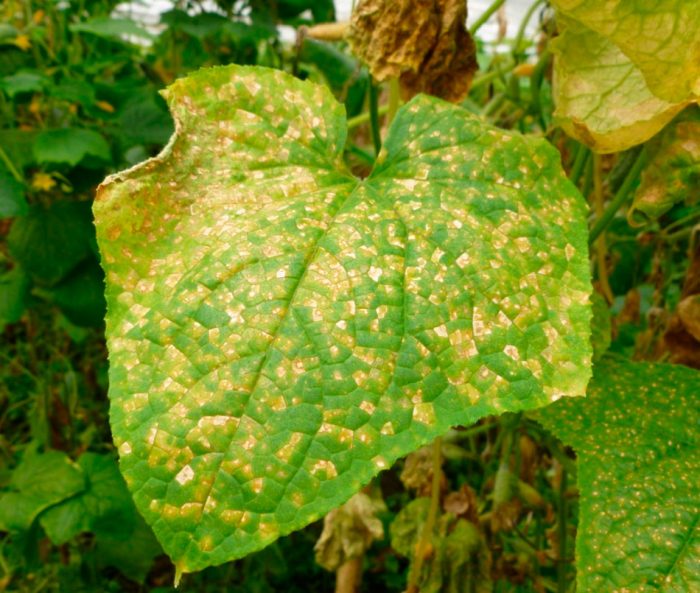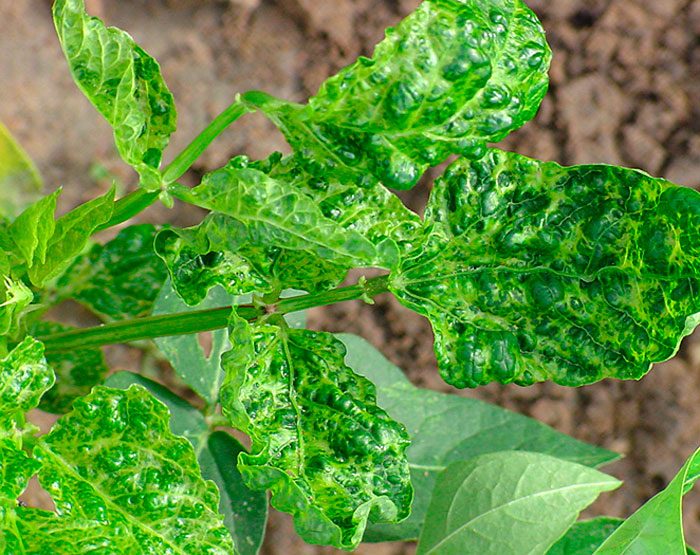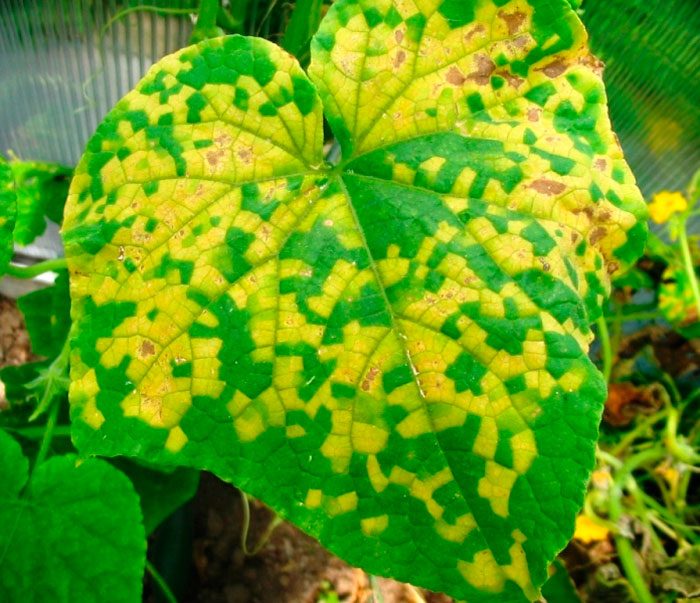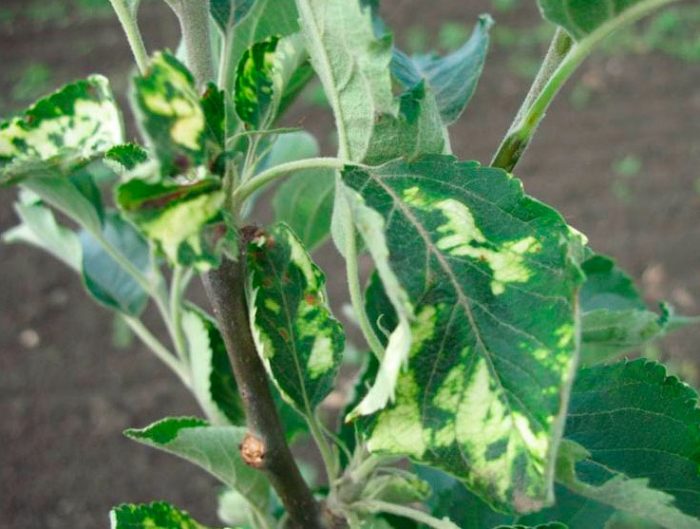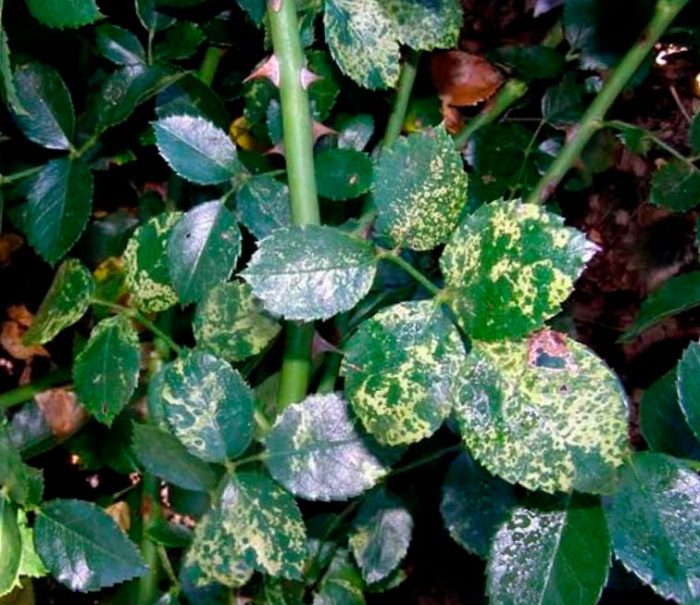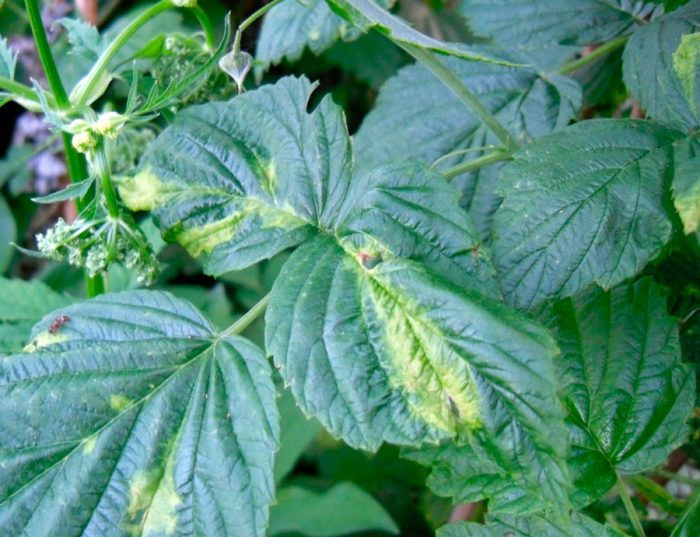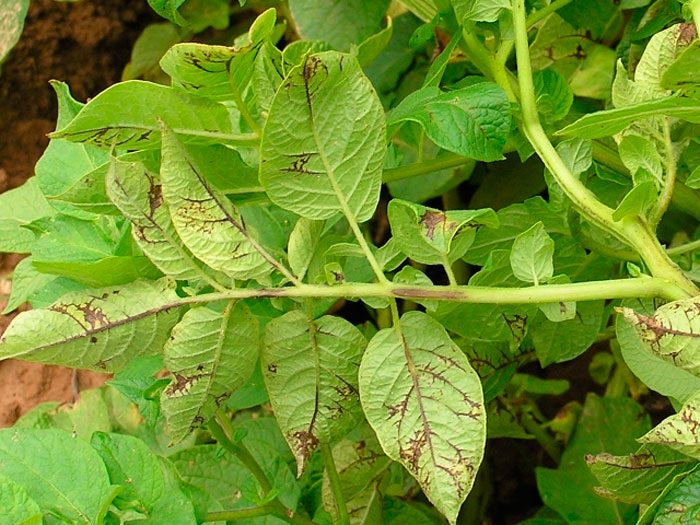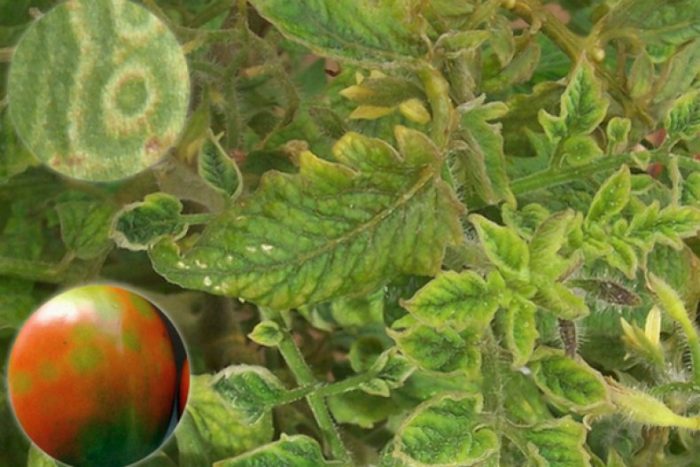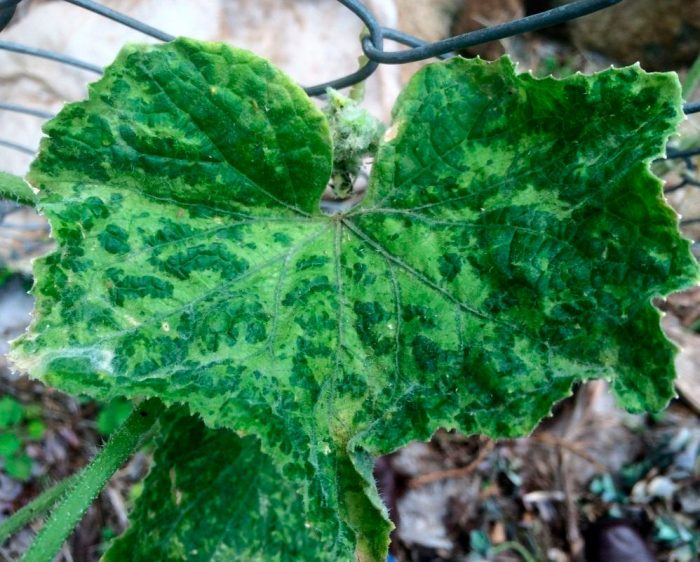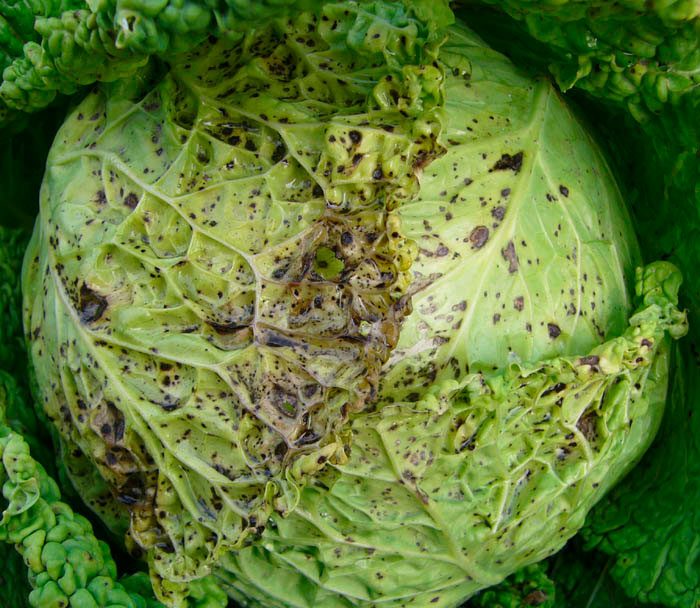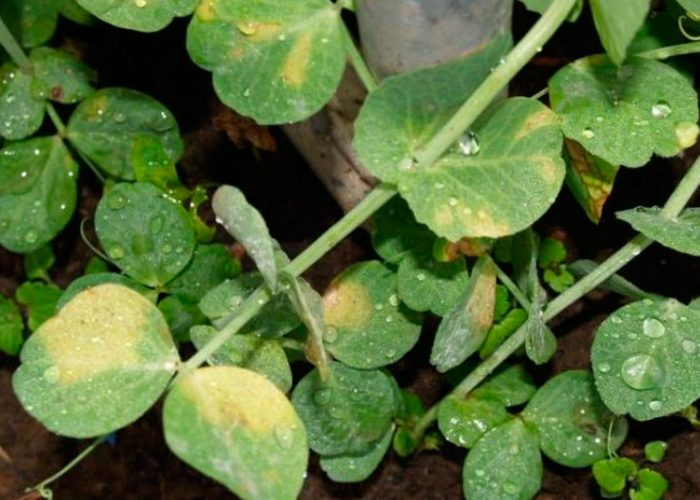Mosaic is one of the most dangerous diseases caused by viruses. The defeat of such a disease occurs through the ground, seed material, or mechanical damage. It is rather difficult for a non-specialist to understand what kind of virus affects the culture. However, all types of mosaics have common features, namely: alternating spots of green or white shade appear on the diseased parts of the plant, which can have different sizes, shapes and intensity of color.
The symptoms of this viral disease were first discovered in the 19th century on plantations where tobacco was grown. Marks of unusual intense color were seen on the foliage of the bush, and the plant's organs began to deform. After some time, the bush died. Soon, signs of the same disease appeared on the neighboring bushes, and after a while this whole plantation could no longer be used for tobacco cultivation. This disease was called "tobacco mosaic" or "tobacco mosaic".
Content
Features of mosaic disease
The mosaic, penetrating into the plant, affects its tissues at the cellular level. Because of this, chlorophyll is partially destroyed, and the level of carbohydrates also decreases, as a result of which tissue sections begin to die off.
To understand that a culture is affected by mosaic disease, conduct a thorough examination. The first symptoms of the disease:
- Irregular specks of various sizes and colors are formed on the foliage: whitish, yellowish or deep green. Due to these spots, the structure of the sheet plate begins to deform.
- The plant begins to grow and develop very slowly, its water exchange is disrupted. As a result, young shoots, stems and foliage dry up.
- On the surface of the fruit, brown marks are formed, rot appears on them, and they can no longer be used for food.
The bush is affected by the virus after it comes into contact with a diseased plant or if it has mechanical damage (for example, it was injured when diving). Sucking pests such as aphids, bugs and ticks also contribute to the spread of the disease. And also animals, birds, wind, as well as raindrops, which contain the smallest particles of the affected plant, can become involuntary carriers of the mosaic.Also, mosaic pathogens are often found in the ground in the root area of the plant, since it is there that you can find the remains of foliage affected by this viral disease.
The disease develops very actively at high air humidity and in warmth (from 20 to 25 degrees). In addition to tobacco, mosaics are affected: cucumbers, cabbage, peas, potatoes, tomatoes, beets, soybeans, beans, as well as berry, fruit and ornamental crops.
How to deal with mosaics
To date, they have not yet come up with ways to deal with mosaics that would be highly effective. In the event that the culture is superficially affected, then you can take a very sharp sterile instrument and try to cut out the diseased areas, while be sure to capture healthy tissue. After that, the foliage of the bush is sprayed with a solution of Karbofos (75 grams of the drug per bucket of water). This treatment is unlikely to stop the development of the disease, but thanks to it, you will be able to protect neighboring bushes from infection. However, if the bush is very badly affected, then it is dug up as soon as possible and must be destroyed by fire in order to prevent the spread of the disease. After the work with the diseased culture is completed, be sure to take off your clothes and boil them with powder or soap. This is necessary in order to destroy the mosaic virus that could get on clothes, because in most cases it dies on its own only after a few years.
Preventive measures
The only way to really fight this viral disease is through agrotechnical and preventive measures. The main list of measures to help protect crops from mosaic damage:
- For cultivation, choose those varieties and hybrids that are most resistant to viral diseases.
- For sowing or planting, you need to use only absolutely healthy material, which must be disinfected beforehand.
- Planting seedlings should be carried out according to the scheme developed by specialists. In this case, the bushes will be well ventilated.
- Start timely control of pests, as well as weeds, on which they prefer to settle.
- All garden tools must be disinfected. To do this, they are immersed for 30 minutes in a solution of copper sulfate (for 1 liter of water 4 tbsp. L.) Or manganese potassium (for 1 liter of water 2 tbsp. L.).
- All affected plants are destroyed by fire, and they are taken along with a clod of earth. After that, the soil is disinfected in the area in which they grew, and a strong solution of potassium manganese is used for this.
- The area on which the mosaic appeared cannot be used for growing crops for the amount of time provided by the quarantine.
Plant mosaic
Mosaic patterns can be caused by different viruses in different cultures. In order to get rid of diseased plants in a timely manner and protect healthy specimens from infection, you need to know how the mosaic manifests itself in various crops.
Fruit trees
Most often, fruit trees get sick with subcutaneous spotted mosaic, its main symptoms:
- cracks form on the surface of the bark of the main branches;
- a mosaic pattern appears on the foliage;
- deformation of the fruit is observed, dense areas are formed on them, and the pulp becomes dark;
- the tree gives a poorer harvest.
Flowers
The mosaic can infect roses, while a diseased plant can be identified by the following symptoms:
- arrows and yellow streaks appear on the surface of young shoots and foliage;
- the flowers become smaller, they become lethargic and greenery forms on them, and most of the affected flowers fly around;
- flowering becomes shorter;
- bushes that are located next to a diseased plant are also very quickly affected by mosaics.


Watch this video on YouTube
Berry bushes
Vein mosaic can affect various berry crops, for example: currants, grapes, raspberries, gooseberries, etc. The main symptoms of this disease:
- chlorosis can be found on the veins of the leaf plates (marks of various shades are formed);
- at sheet plates, the edges are wrapped and outwardly they look as if scorched by fire;
- young shoots begin to develop very slowly;
- angular specks form on the surface of all foliage.
Potatoes
Potatoes can be affected by striped mosaic, its main symptoms are:
- on the shoots and upper tissues, well-distinguishable longitudinal stripes are formed;
- parts of the bush located above the ground become rough, and a noticeable decrease in their size is also observed;
- root crops become fusiform and lose their taste;
- because of the disease, the bushes give a meager harvest, and most of them die.
Tomatoes
Often, a mosaic that affects tomatoes is called a burn. Because of it, up to 20 percent of the entire crop can die. The main signs of the disease:
- foliage is painted in a more saturated shade and specks form on it;
- spots of a dark green and greenish hue appear on the surface of the fruit, their deformation is observed, and the pulp becomes black and rots.


Watch this video on YouTube
Cucumbers
Cucumbers most often get sick with ordinary mosaic, and the disease manifests itself as follows:
- there is a curvature of the shoots, while specks on the foliage are formed even during the seedling period;
- as the disease develops, the leaf plates dry out and fold;
- longitudinally spaced cracks appear on the shoots;
- over time, less and less flowers are formed on the plant, and their shrinkage is observed;
- twisting and yellowing of zelents occurs;
- over time, the stem brightens and becomes almost transparent, then discoloration and wilting of the entire plant is observed.
Cabbage
All varieties of cabbage are affected by cabbage mosaics. The main symptoms of the disease in this case are as follows:
- the veins on the foliage become paler, and small specks of necrosis are also formed on it;
- in cabbage, all tissues become wrinkled;
- as the disease progresses, the stem becomes very fragile and can easily break.
Radish and radish
Radishes and radishes can also get sick with a mosaic, in this case the disease manifests itself as follows:
- a mosaic pattern is formed on the surface of the leaf plates, while their deformation occurs, and the veins become dark;
- the roots grow very slowly, and black spots appear on their surface.
Peas
Peas can get sick with both deforming mosaics and ordinary mosaics. Signs of the disease:
- the tissues of the plant look wrinkled and curl appears;
- spots of yellow and white are formed on the foliage;
- the bush grows very slowly;
- the pods become speckled and blackened and rotted, and the peas turn yellow.
Beans
Beans are also affected by common mosaic. Symptoms:
- a lot of irregular specks appear on the foliage, after which its folding and bubbling is observed;
- the stem of the bush is also affected, and a rosette appears in its lower part, consisting of diseased leaf plates;
- the growth of seedlings stops, and it becomes dwarf;
- the root system is also affected by the mosaic, and the fruits become faded.
Mosaic control chemicals
It has already been said above that there are no effective drugs for mosaic. The only salvation from this viral disease is prevention, proper care and adherence to agrotechnical rules.


Watch this video on YouTube

